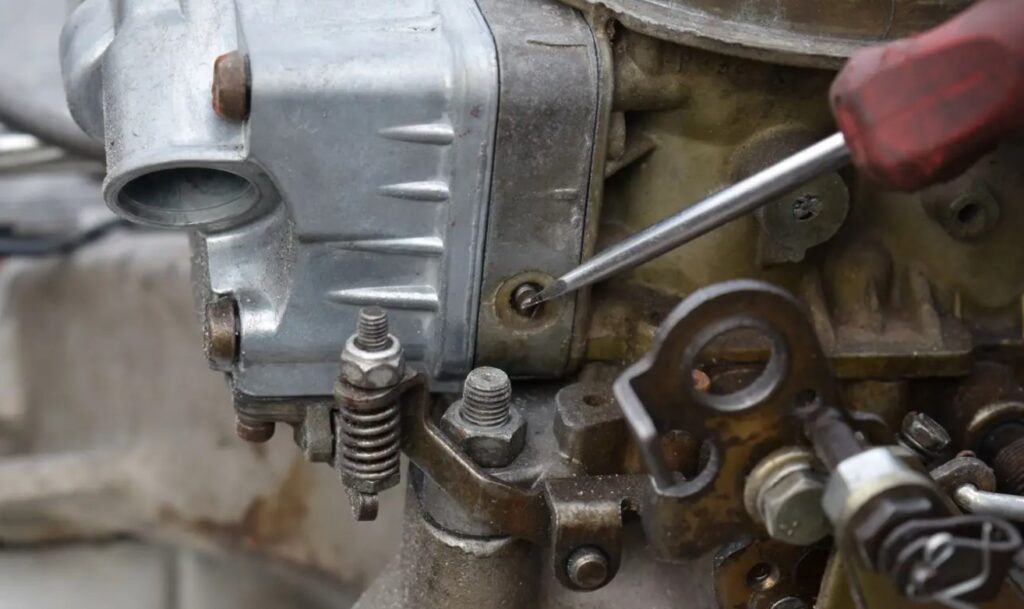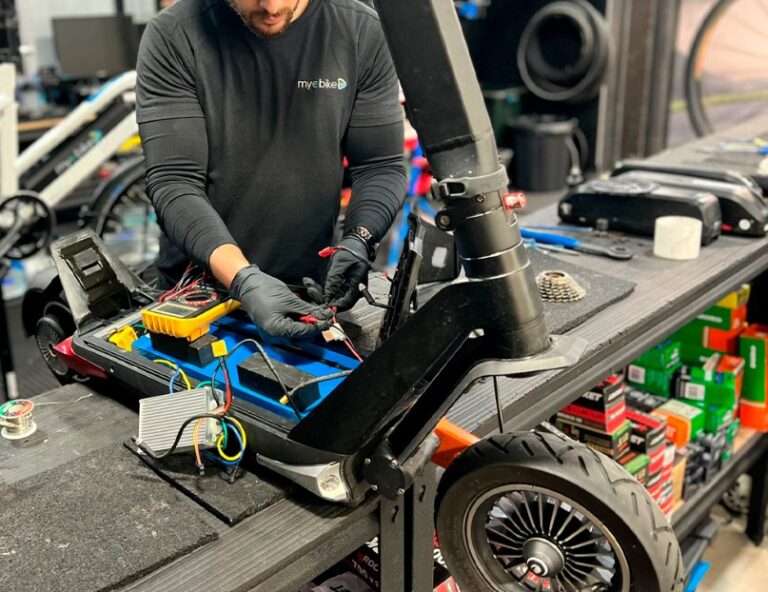How To Tune Bike Carburetor? All You Need To Know
I remember the first time I tried to tune a bike carburetor. It was a bit daunting, but once I got the hang of it, my bike ran like a dream! This article will guide you How To Tune Bike Carburetor? ensuring your bike performs at its best.
key takeaways
- Understand your bike’s carburetor type.
- Gather necessary tools: screwdrivers, wrenches, and a tachometer.
- Familiarize yourself with terms like air-fuel mixture, idle speed, and jetting.
- Follow a step-by-step approach for precision.
- Regular checks post-tuning ensure sustained performance.
How To Tune Bike Carburetor?
To tune a bike carburetor, you need to adjust the air and fuel mixture so your bike runs smoothly and efficiently. For a perfect tune, turn the idle mixture screw until the engine idles smoothly, and adjust the idle speed screw to set the engine’s idle speed to the recommended RPM. This simple process makes your bike perform better and saves fuel.

Understanding the Bike Carburetor
A carburetor is the heart of a motorcycle’s engine, responsible for mixing air and fuel in the correct ratio. Knowing the type of carburetor your bike has is crucial. Motorcycle carburetors vary, with the most common being slide, butterfly, and constant velocity (CV) types. Each type has a unique tuning approach.
In the first phase of tuning, identify the carburetor type. This information is usually found in the bike’s manual. Knowing this sets the stage for a successful tuning process.
Types of Motorcycle Carburetors
Three primary types of carburetors are found in motorcycles. Slide carburetors, often used in racing bikes, offer quick throttle response. Butterfly carburetors, common in older models, are recognized for their simplicity. CV carburetors, found in modern bikes, automatically adjust the air-fuel mixture.
Each carburetor type has a distinct structure and tuning process. For slide carburetors, adjustments focus on the slide and needle position. Butterfly carburetors require precise adjustments to the throttle valve. CV carburetors often need vacuum synchronization for optimal performance.
Necessary Tools for Carburetor Tuning
Tuning a carburetor requires specific tools. A flathead and Philips screwdriver are essential for adjusting screws. Wrenches may be needed to loosen or tighten nuts and bolts. A tachometer is crucial for measuring engine RPMs during idle adjustments.
Before starting, ensure you have these tools. They are critical in making accurate and safe adjustments. It’s also wise to have a clean workspace and organized tools for efficiency.
Preparing for Carburetor Tuning
Preparation involves more than just tool gathering. Cleaning the carburetor and surrounding area prevents debris from entering the engine. A well-lit workspace is essential for visibility. Also, ensure the engine is cool before starting, as working on a hot engine can be hazardous.
A systematic approach to preparation sets the foundation for successful tuning. It minimizes the risk of errors and ensures safety.
Basics of Air-Fuel Mixture Adjustment
The air-fuel mixture is vital in engine performance. A rich mixture has more fuel, while a lean mixture has more air. Finding the right balance is key. Adjusting the air-fuel mixture involves the pilot (or idle) screw and the main jet.
Initially, locate the pilot screw. It’s usually on the carburetor’s side. Adjusting this screw alters the idle mixture. Turn it clockwise for a leaner mixture and counterclockwise for a richer mixture.
Fine-Tuning the Idle Speed
Idle speed is how fast the engine runs when it’s not in motion. Adjusting the idle speed is crucial post air-fuel mixture adjustment. Locate the idle speed screw, often near the throttle cable. Turning it clockwise increases the speed, while counterclockwise decreases it.
Aim for a steady idle speed that’s neither too high nor too low. The bike’s manual often specifies the ideal RPM range. This adjustment ensures the engine runs smoothly at idle.
Understanding and Adjusting Jets
Jets control the amount of fuel in the mixture. There are two main types: pilot (or slow) jets for idle and low-speed performance, and main jets for high-speed operation. Selecting the correct size and adjusting them is crucial for engine performance.

Start by understanding the current jet sizes. This information is often in the bike’s manual or on the jets themselves. If adjustments are needed, replace the jets with the appropriate size for your bike’s requirements.
The Process of Jetting
Jetting involves replacing or adjusting the existing jets in the carburetor. For a richer mixture, use larger jets; for a leaner mixture, smaller ones. This process is often trial and error, requiring patience and attention to detail.
It’s important to make incremental changes and test the bike’s performance after each adjustment. Note the response in various speed ranges to ensure overall engine efficiency.
Regular Maintenance Post-Tuning
After tuning, regular maintenance is key. This includes checking the air-fuel mixture and idle speed periodically. Changes in altitude or temperature can affect the carburetor settings.
Importance of Consistent Checks
Consistent checks ensure the bike remains in optimal condition. Look out for signs of poor performance like stalling, backfiring, or irregular idling. These might indicate the need for re-tuning or adjustments.
Regular maintenance not only prolongs the life of your bike but also ensures a safer riding experience. It helps in identifying issues before they escalate into major problems.
Alternative Methods for Carburetor Tuning
While traditional tuning methods are effective, alternative approaches can offer more precision and efficiency. One such method is using a carburetor synchronization tool. This tool helps in balancing multiple carburetors, ensuring they work in harmony.

Another advanced technique involves using a digital air-fuel ratio meter. This tool provides real-time data on the air-fuel mixture, allowing for more accurate adjustments. It’s particularly useful for fine-tuning and diagnosing issues.
Using a Carburetor Synchronization Tool
Carburetor synchronization is crucial for bikes with multiple carburetors. This process ensures that each carburetor delivers the same air-fuel mixture. A synchronization tool measures the vacuum pressure of each carburetor and helps adjust them to the same level.
This method is more precise than traditional tuning. It ensures smoother engine performance, especially at higher speeds. The process might be complex but yields significant improvements in engine response and efficiency.
Digital Air-Fuel Ratio Meters for Precision Tuning
Digital air-fuel ratio meters are innovative tools in carburetor tuning. They provide instant feedback on the air-fuel mixture, helping to make precise adjustments. This tool is essential for achieving the perfect balance, especially in high-performance bikes.
Using this meter involves installing sensors in the exhaust system. The data helps in adjusting the carburetor for optimal performance. This method is particularly beneficial for fine-tuning and diagnosing hard-to-detect carburetor issues.
Troubleshooting Common Carburetor Problems
Even with proper tuning, carburetors can develop issues. Understanding common problems and their solutions is essential. One frequent issue is carburetor flooding, which can be caused by a stuck float or a leaky needle valve.
Another common problem is the carburetor running lean. This occurs when there’s too much air in the mixture. It’s often due to clogged jets or an air leak in the carburetor.
Solving Carburetor Flooding
Carburetor flooding can cause the engine to stall or not start. To fix this, check the float and needle valve. Ensure the float moves freely and the needle valve seals properly. Sometimes, replacing these parts is necessary.
Regular cleaning of the carburetor can prevent flooding. It’s crucial to check for any signs of wear and tear, especially in older bikes.
Addressing a Lean Running Carburetor
A lean-running carburetor can lead to engine overheating and poor performance. Inspect the jets for clogs and ensure there are no air leaks. Replacing the air filter can sometimes resolve this issue.
Adjusting the air-fuel mixture screw can also help. If the problem persists, consulting a professional is advisable. Regular maintenance is key to preventing these issues.
Conclusion
Tuning a bike carburetor is a detailed yet rewarding process. It enhances your bike’s performance and efficiency. Remember to boldly approach this task with the right tools, knowledge, and patience. Regular checks and maintenance post-tuning ensure lasting benefits.
Frequently Asked Questions
How often should I tune my bike’s carburetor?
Carburetor tuning should be done annually or after any major changes to the bike’s exhaust or intake systems. Regular checks every few months are recommended for optimal performance.
Can I tune my carburetor without a tachometer?
While a tachometer is recommended for precision, you can tune by ear. Listen for a smooth, steady idle and responsive acceleration. However, this method requires experience and a good ear.
What are the signs of a poorly tuned carburetor?
Signs include erratic idling, poor acceleration, engine stalling, and excessive fuel consumption. If you notice these, a carburetor check is advised.
Does altitude affect carburetor settings?
Yes, altitude affects air density, impacting the air-fuel mixture. Higher altitudes may require leaner settings, while lower altitudes might need richer settings.
Is it better to have a richer or leaner air-fuel mixture?
The ideal mixture depends on your bike and riding conditions. Generally, a slightly richer mixture is safer as a lean mixture can cause overheating and engine damage.

Welcome to the exhilarating world of Matt Rex, a professional car racer turned renowned vehicle enthusiast. Immerse yourself in his captivating blog as he shares heart-pounding adventures, expert reviews, and valuable insights on cars, trucks, jets, and more. Fuel your passion for speed and discover the beauty of vehicles through Matt’s engaging stories and meticulous expertise. Join the ever-growing community of enthusiasts who find inspiration and expert advice in Matt Rex’s blog—a digital hub where the thrill of speed meets the pursuit of knowledge.







